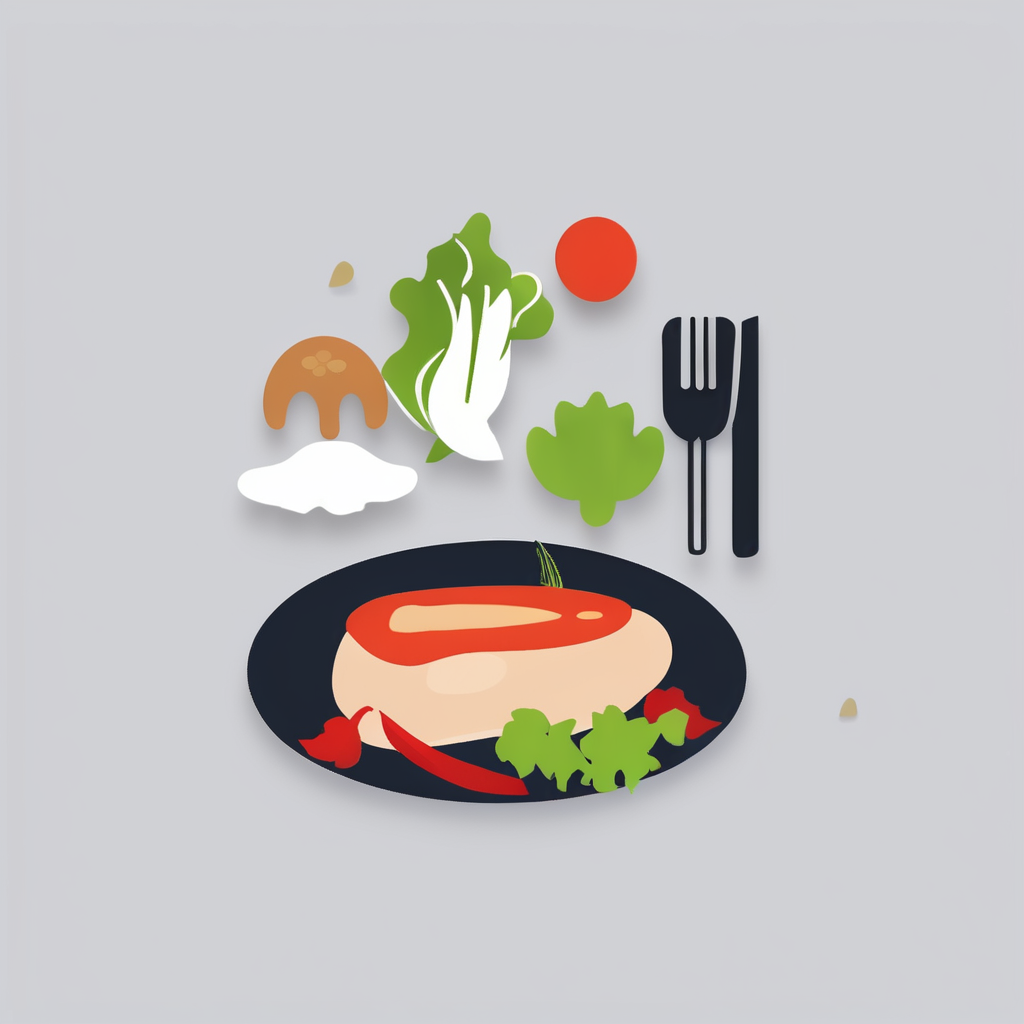Government Policies Driving Energy Efficiency in Kitchen Appliances
UK government regulations play a pivotal role in shaping energy efficiency policies for kitchen appliances. These regulations establish strict minimum energy performance standards that manufacturers must meet. For instance, the Energy Labelling Scheme requires all new kitchen appliances to display clear, standardized energy ratings. This empowers consumers to choose products that consume less energy and lower environmental impact.
The UK’s ambitious Net Zero target further influences these policies by encouraging continual enhancements in appliance efficiency. Meeting the Net Zero goal demands reduced carbon emissions across all sectors, with kitchen appliances being a key focus due to their widespread use. Therefore, government regulations are continuously updated to tighten energy efficiency requirements, pushing innovation in appliance design.
Have you seen this : Discover the cutting-edge kitchen design trends sweeping across the uk
Recent legislative updates include stricter energy thresholds for refrigerators, ovens, and dishwashers, effectively phasing out older, less efficient models. Proposed future actions aim to expand these standards to cover emerging technologies, ensuring all kitchen appliances contribute to national carbon reduction goals. Adhering to these standards not only complies with UK government regulations but also benefits consumers through lower energy bills and a smaller carbon footprint.
Incentives and Support Schemes for Manufacturers and Consumers
Empowering innovation and adoption through financial support
In the same genre : Discover the driving forces behind the hottest trends in uk kitchen designs
Government incentives play a pivotal role in motivating manufacturers to develop cutting-edge, energy-efficient kitchen appliances. By offering tax credits and subsidies, governments encourage companies to invest in research and development that reduces the energy consumption of household devices. This drive fosters competition, leading to the creation of appliances that not only save electricity but also enhance performance and durability.
On the consumer side, various energy efficiency grants and consumer rebates make it more affordable to upgrade to greener options. These financial support schemes often cover part of the purchase cost, lowering the barrier to entry and promoting widespread adoption of efficient appliances. For example, rebate programs sometimes provide instant savings at the point of sale, while longer-term grants can reimburse a portion of the price after verification.
Together, these incentives create a market environment where both producers and buyers are aligned towards sustainability goals. By taking advantage of these schemes, consumers benefit from reduced energy bills and manufacturers gain a competitive edge in an eco-conscious market, accelerating the transition to energy-smart kitchens.
Industry Collaboration and Public-Private Partnerships
Collaboration among the UK government, appliance manufacturers, and retailers plays a pivotal role in driving energy efficiency initiatives. These partnerships foster innovation alliances that accelerate the development of energy-saving appliances while ensuring market readiness. For example, sustainability collaborations have led to joint ventures where manufacturers implement government-backed energy standards early in the design process.
One notable success is a public-private partnership that helped introduce ultra-efficient refrigerator models across major retail chains. By aligning government regulations with industry incentives, the partnership lowered production costs, making advanced technology affordable for consumers. This synergy illustrates how industry partnerships optimize resources, share expertise, and promote cleaner technologies.
Such collaborations also enable real-time data sharing and consumer feedback integration, refining product development to meet both regulatory goals and customer needs. Ultimately, innovation alliances between public entities and private companies establish a sustainable framework that benefits the environment and enhances economic competitiveness. These examples reinforce the value of structured industry partnerships in advancing national energy efficiency targets.
Energy Labelling, Certification, and Consumer Guidance
Energy labelling schemes play a crucial role in guiding consumers toward more efficient kitchen appliances. In the UK, the energy labelling scheme mandates clear display of energy consumption ratings on appliances, helping buyers quickly assess their environmental impact. These labels often range from A to G, with A-rated products representing the most energy-efficient options.
Appliance certification further ensures that these energy labels are accurate and trustworthy. Certified appliances undergo rigorous testing to confirm their compliance with energy efficiency standards. This process gives consumers confidence that the labelled performance reflects real-world usage, fostering greater trust in purchasing decisions.
Consumer awareness benefits significantly from these schemes. When shoppers understand the implications of energy ratings, they can weigh long-term savings against upfront costs. Studies show that energy labelling directly influences consumer behaviour, with many prioritising appliances that promise lower electricity bills and reduced carbon footprints.
Overall, the combined effect of stringent energy labelling and reliable appliance certification leads to more informed choices. This not only supports environmental goals but also promotes economic benefits for consumers investing in smarter kitchen appliances.
Technological Advancements and Innovations
Appliance technology has experienced significant progress, particularly in energy-efficient innovations that help reduce household energy consumption. Modern smart kitchen appliances use Internet of Things (IoT) connectivity to optimize energy use, adapting to user habits and peak electricity hours. For example, smart refrigerators adjust cooling cycles based on door openings and internal temperature, lowering power consumption without sacrificing performance.
These smart kitchen appliances often integrate sensors and machine learning algorithms to enhance efficiency further. This innovation not only reduces utility bills but also lessens environmental impact by minimizing wasted energy. Manufacturers are increasingly focusing on designing appliances that balance functionality with energy savings, such as induction cooktops and convection ovens embedded with energy monitoring features.
Future trends in appliance technology look promising, with developments leaning toward greater automation and seamless interaction between devices. The advancement of AI-driven appliance management systems promises smarter energy use, anticipating when and how to operate appliances for optimal efficiency. This ongoing innovation will transform everyday kitchen tasks into energy-conscious routines, helping homeowners consciously reduce their energy footprint while enjoying convenience.
Statistics, Market Trends, and Consumer Demand
The shift towards energy-efficient kitchen appliances is evident in recent energy efficiency statistics across the UK. Reports show that over 60% of households now prefer appliances rated A+++ or higher, indicating a strong market trend towards sustainability. This aligns with consumer preferences that prioritize lower energy consumption and reduced electricity bills without compromising performance.
Market trends reveal a steady increase in sales of energy-efficient kitchen appliances, with projections estimating a 15% annual growth over the next five years. This surge is driven by growing environmental awareness and government incentives encouraging sustainable choices.
Consumer demand focuses heavily on practical benefits: reduced running costs, longer appliance lifespans, and eco-friendly features. Additionally, factors like rising energy prices and stricter regulations on energy consumption have further stimulated interest in energy-efficient kitchen appliances.
Understanding these consumer preferences helps manufacturers tailor their products, while buyers gain from well-informed decisions. The clear upward trajectory in market demand reflects a collective move to blend innovation with environmental responsibility in everyday cooking spaces.
Consumer Education and Awareness Campaigns
Educating consumers plays a crucial role in promoting sustainable appliance use. National education campaigns have significantly increased consumer awareness by highlighting the benefits of energy-efficient appliances. These initiatives focus on making the advantages clear, such as cost savings and environmental impact reduction.
Non-governmental organizations (NGOs) and industry groups actively contribute to consumer education through targeted digital campaigns. Their efforts ensure that information reaches diverse audiences, encouraging informed purchasing decisions. These campaigns often showcase product comparisons, energy ratings, and practical tips for efficient operation.
By combining these approaches, education campaigns create a more knowledgeable consumer base. This, in turn, drives market demand for sustainable appliances, reinforcing eco-friendly manufacturing trends. For instance, campaigns emphasize how choosing energy-efficient appliances not only reduces household energy consumption but also supports broader climate goals.
Continued investment in consumer awareness and education campaigns is vital. They empower buyers with facts, making sustainability a tangible and achievable choice in daily life.
Future Strategies and Action Plans
As the UK advances towards its sustainability goals, future energy policies will prioritize accelerating the adoption of energy-efficient kitchen appliances. Governments and industry leaders are collaborating to implement strategic planning that promotes innovation and accessibility in this sector. These efforts not only respond to climate change imperatives but also aim to reduce household energy consumption significantly.
Key components of future energy policies include financial incentives, updated regulations, and awareness campaigns designed to encourage consumers to switch to energy-saving kitchen appliances. This strategic planning ensures alignment with the UK’s broader commitments to lower carbon emissions and enhance energy security. By emphasizing smart technology integration and improved appliance standards, policymakers intend to create lasting impact.
Furthermore, coordinated government-industry approaches will support research and development, fostering continued advancements in appliance efficiency. The embedding of these steps into national frameworks reinforces the UK’s leadership role in sustainable development. With strategic planning and future energy policies working hand in hand, the path to achieving the UK sustainability goals becomes clearer and more attainable for all stakeholders involved.
How Robot Hoovers Fit Into Smart Homes
Integrating a robot hoover into a smart home setup offers more than just convenience—it transforms cleaning into an effortless, intelligent task. These devices communicate seamlessly with home automation systems, allowing users to schedule cleaning sessions via voice assistants or mobile apps. This synergy ensures floors stay spotless without lifting a finger.
One common question is how well robot hoovers handle varied surfaces. Thanks to advanced sensors and adaptive navigation technology, modern robot hoovers adjust suction power and cleaning patterns to effectively clean carpets, hardwood, and tile. This versatility boosts efficiency and preserves floor quality.
Maintenance is another pivotal aspect. Robot hoovers typically come with self-emptying bins and washable filters. However, regular checks and filter replacements guarantee peak performance. Keeping the robot hoover in good shape also prolongs its lifespan and sustains powerful cleaning.
In summary, robot hoovers not only offer smart convenience but also reliable, surface-aware cleaning tailored for busy lifestyles. Their integration into smart homes is a game-changer for effortless upkeep and time-saving, delivering consistent cleanliness with minimal user effort.

